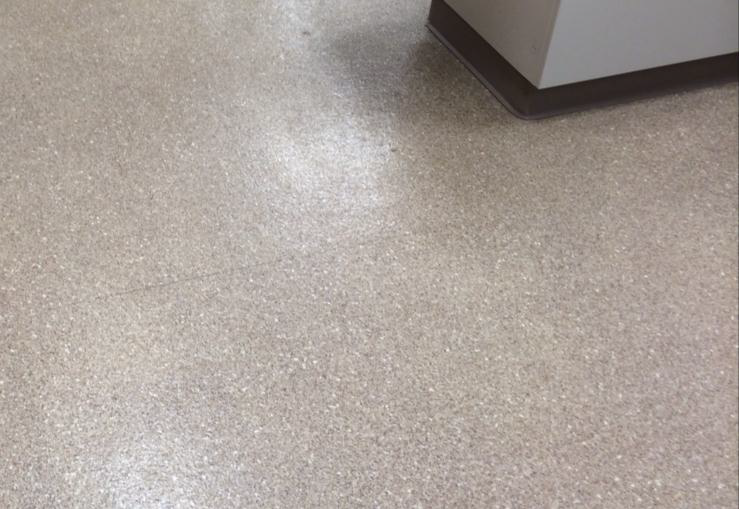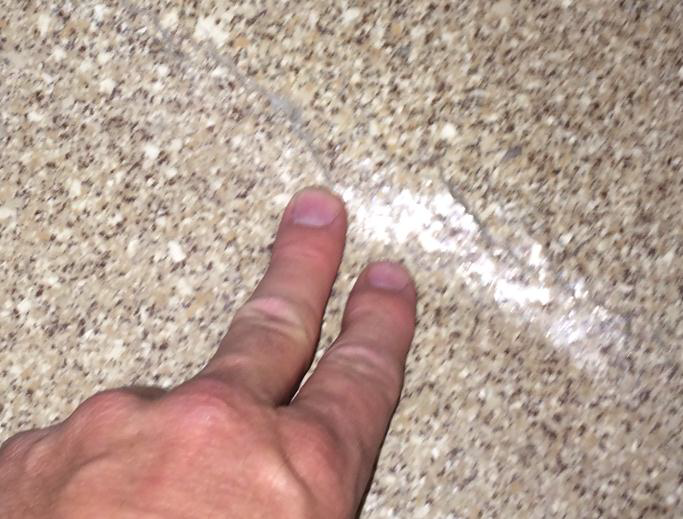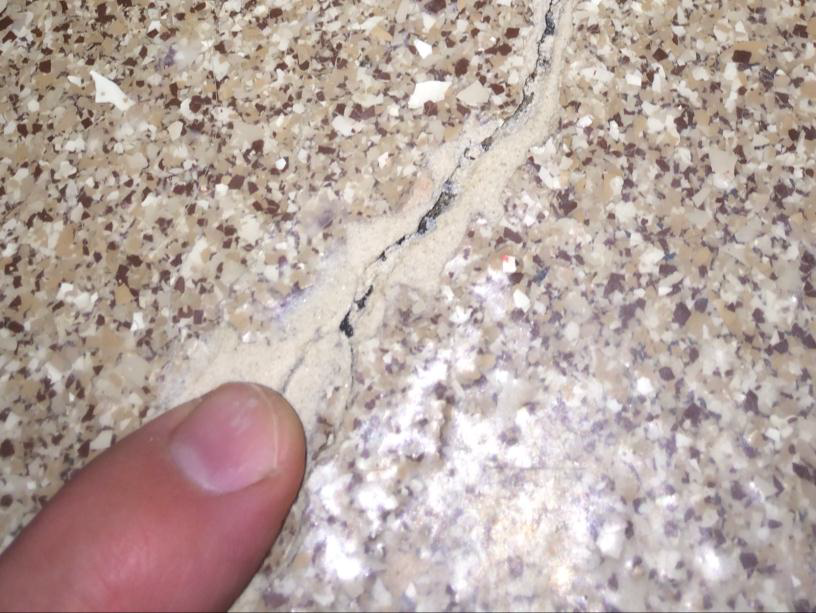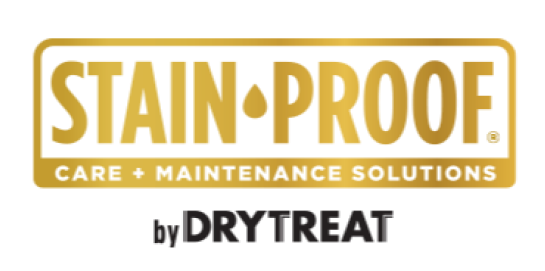How many times have flooring contractors installed a ridged resinous polymer flooring system just to get a call back months later stating that the floor has cracked? The industrial flooring industry, as a whole, has typically taken the costs and responsibility for these crack repairs on the chin, without questioning who is really to blame for the deficiency. The rule governing this behavior is the “who touched it last” rule, which means – ‘if you coated it, you accepted it!’.
The purpose of this paper is to provide the flooring professional with information on the most common crack issues experienced in the flooring business; what information should be gathered and documented to keep the responsibility where it belongs; and, how to evaluate who is really responsible when a crack appears after the coating or overlay has been installed.
Concrete Cracks
Concrete is by far the most common structural substrate on which resinous flooring materials are applied. Concrete, in its most basic description, is a mixture of cement, various grades and sizes of aggregate and water. While the makeup of concrete is basic in design, the proper placement, curing and drying of concrete is an extremely complex process requiring a high degree of expertise.
There are many different mix designs that are used to modify concrete performance and physical characteristics. Each of these designs has pros and cons but as a general rule, factors that contribute to the amount of concrete cracking include add-mixtures, weather conditions, proper grade selection and compaction, water-to-cement ratios, moisture barriers, proper curing and drying of the concrete, proper layout and cutting of contraction joints (often referred to as control joints) and overloading the slab. Even when concrete is properly designed, placed, cured and dried, it will still crack. In the FOREWARD section of ACI 302.1R-96 the document explains, “Even with the best floor designs and proper construction it is unrealistic to expect completely crack-free and curl free results.” In addition, there is no way to predict exactly when and where the concrete will crack. So what can a flooring contractor do to avoid problems with the concrete cracking?
Know Thy Cracks!
Concrete cracks for many reasons. Some of the most common reasons are as follows:
Cracking Due to Corrosion
The corrosion of reinforcing rebar and other embedded metals is a major cause of cracking in concrete floors. As reinforcing steel corrodes it expands, creating tensile strengths that eventually result in cracking and other concrete surface failures. Often rust can be seen at the surface and can be a help in quickly identifying this type of cracking.
Expansion Cracks
As with many materials, concrete will expand exponentially as it gets hotter. This expansion can cause immense stress on a concrete floor. As the concrete expands, it pushes against all obstacles in its way. When it comes against an unmovable object such as another concrete floor, the weaker of the two obstacles will be forced to crack. Designers plan for this by placing expansion joint material such as foam, asphalt and cork at the interface between the concrete floor and walls, columns and other structural components.
Loss of Sub-Base Support
Loss of sub-base support is most often caused when the sub-base is washed-out or settles from its original compacted state, causing an implosion of the concrete slab. Although it is most commonly seen in older slabs, it can be seen in new construction when the concrete form work has been removed too early in the curing stage.
Thermal Cracks
Thermal cracks are caused when the temperature increases in the interior portions of the concrete, causing it to expand, while the outside surface of the concrete is cooling causing it to contract. When the temperature differential between the interior and exterior is too great, consequential tensile stresses can cause thermal cracks at the surface. This kind of cracking is usually seen when concrete is in mass, but can also be found in thicker concrete floor pours.
Crazing Cracks
Crazing cracks are very common and exhibit themselves as small pattern cracks occurring in a floor slab surface. They are caused when the surface of the concrete floor dries earlier than the underlying concrete. These cracks are usually smaller than 1/8- to ¼-inch deep and are usually not detrimental to the performance of the flooring.
Plastic Shrinkage Cracks
Plastic shrinkage cracks are caused when moisture evaporates faster from the surface of newly poured concrete, then bleed water can come to the surface to replace the evaporated water. Low humidity, elevated temperatures and high winds can all play a part in drying out the top of a concrete slab. As the top of the slab dries it begins to shrink. The underlying concrete, still wet, restrains this shrinkage, causing tensile stress to develop in the weak top concrete surface, resulting in shallow cracks of varying depth. These cracks usually run parallel with each other about 1 to 3 feet apart and can be fairly wide at the surface. Normally they are a cosmetic defect, but if repaired are not detrimental to the performance of the concrete floor.
Drying Shrinkage Cracks
Concrete, in its plastic state, gains volume due to the exothermic hydration reaction of cement and the reaction of calcium sulfate and calcium aluminate to form calcium sulfoaluminate. This gain in volume occurs within the first few hours after mixing with water. As the concrete loses moisture and begins to harden, it looses volume and acts much like a wet sponge as it dries (see figure 1 and 2). When shrinkage is restrained by its contact with the sub-base, surrounding structural components such as walls, columns, steel reinforcement within the concrete and piping in and through the concrete, tensile stress is developed within the concrete itself. Concrete, while being strong in compressive strength, is weak in tensile strength (approximately 10% of its compressive strength). This weakness is greatly tested as the concrete shrinks and literally pulls itself apart. The result is cracking of the concrete at its weakest points. Designers plan for this by specifying contraction joints at intervals spaced at distances equal to 24 to 30 times the slab thickness and in areas such as re-entrant corners. To be effective in controlling shrinkage cracks, joints must be troweled into the plastic concrete, or cut to a minimum depth of 25% of the actual slab thickness before the concrete has already cracked (usually as soon as it can be walked on without damaging the finish and almost always before 24 hours of placement). Failure to properly weaken the plane at the proper time can result in cracking alongside the planned joint or at random locations. (Concrete Repair Bulletin September/October 1998)

Figure 1: The wet sponge, like wet concrete gains volume

Figure 2: The dry sponge, like dry concrete contracts
Gathering Information
The first step to protecting your bottom line is to do your homework! ACI 302 and 360R-10 provide a plethora of information and outline the most current recommendations for constructing concrete floors and slabs. These documents most likely governed the placement of the concrete that the flooring contractor is hired to coat. Understanding what should and should not have been done when the concrete was placed is extremely important to the flooring contractors success. Failing to spot and document mistakes in the concrete before applying a coating system may result in losses for the flooring contractor. It is not enough to have 20 years of experience with coatings if you don’t understand the concrete you are coating.
New Concrete
There are many benefits to working on a new construction site. The history of the concrete pour has most likely been documented. Weather reports associated with the day of the pour are often mandated to be kept and filed along with batch tickets and other concrete testing results as part of the QA requirements. Specifications and drawings are available for review, and the concrete contractor or general contractor is usually available to ask questions about the actual concrete pour. Asking questions, keeping good notes, taking pictures and performing testing are all critical to both the success of the flooring project and the protection of the flooring contractor.
Whenever possible, the flooring contractor should gather as much information as is available for his files prior to starting any work. Some critical information includes:
- The specification section(s) covering the mix design, slab thickness, sub-base, compaction, steel reinforcement, moisture barrier/retarder for the specified area to be coated.
- The specification covering the flooring system to be installed.
- The soil report for the work site.
- A copy of the submittal for any required moisture barrier or retarder.
- Identification of contraction, construction, expansion, joints, etc.
- Verification that the contraction joint plan was followed.
- Repair requirements for cracks (don’t assume this is the flooring contractors work).
- Noted time elapse after the concrete pour and before the joints were troweled or cut.
- Depth measurements of the joint. This can be done quickly by cleaning out the saw cut with a putty knife and then placing the putty knife vertically to the bottom of the joint and measuring to see if the depth is equal to 25% of the slab thickness. It is too common to see contraction joints with large cracks running right next to them. Often, if one measures the saw cut depth, he will find that the cut was not made deep enough to properly weaken the concrete plane, resulting in the concrete cracking at the point of weakest tensile strength or greatest load.
- Sounding at the side of joints, re-entrant corners and ends of slabs to detect areas where the slab is not in contact with the sub-base.
- Approved flooring material submittals and detailed installation instructions.
Old Concrete
Obtaining design information on older concrete slabs can be difficult for the simple reason that the data has been lost over time. When most or all of the contract documents are missing, visual inspection and testing becomes very critical. Additional steps the flooring contractor should take include:
- Core drilling over a crack and joint to ascertain the type of crack(s) exhibited, to learn the thickness of the slab, to see if a vapor barrier/retarder was installed, and to see the sub-base and construction practice employed.
- Send the cores out for testing if contaminants are known or suspected or if the concrete feels punky or chalky (the joints are often the place where contaminants first show themselves when a floor is finished)
- Random testing with a rebound hammer to spot check compressive strength of the existing concrete (this will also help detect areas where the concrete is not in contact with the sub base as a hollow sound with low compressive numbers)
In all cases, take pictures and create detailed drawings of the joints and cracks that are visible, as well as those areas where a hollow sound was detected. If this step is not completed, any new crack that appears will be blamed on the flooring contractor as having not properly addressed the cracks prior to over-coating the floor. This process is time consuming, but will help ensure protection against repairing new cracks for free.
Follow the Contractual Chain
Once the information above is gathered and thoroughly examined, the flooring contractor should present their findings in a clear, concise document to the proper authority in the contractual chain. This document should contain areas of concern, such as where the specification is silent or fails to address the issues discovered by the flooring contractor. Concerns relating to joint and crack repair and any defective areas that will negatively affect the performance of the flooring system and/or warranty should also be included in this document. For example, if the concrete floor was specified to receive two coats of a waterborne epoxy sealer with a total system DFT of 3-5 mils and the majority of the floor is covered with crazing cracks, it would be imperative for the flooring contractor to express that the specified system will most likely not hide the crazing cracks. If asked by the owner or owner’s representative what should be done to correct the issue(s) at hand, the flooring contractor should speak from expertise only! Recommending a solution that fails to resolve the matter or exacerbates the issue may result in liability and losses both financial and to the flooring contractor’s credibility. If the specification is in contradiction to the approved manufacturer’s repair instructions, the flooring contractor should involve the manufacturer and always file an RFI (request for information) with the architect/engineer.
When joints become cracks
The misunderstanding and wrong treatment of contraction, expansion, construction and transition joints often become costly crack repairs. Below are pictures of the most common mistakes made by flooring contractors when dealing with joints.

Figure 3: The interface between a footing and the concrete slab should be honored. In this picture the flooring contractor treated the slab and the footing as though they were monolithic, despite the fact they were not. This mistake is the flooring contractor’s responsibility, as he should have anticipated the movement and addressed the detail with the owner.

Figure 4: This crack is over a contraction joint where the substrate continued to shrink. When the substrate expands a hump will be evident as the material is forced upward.

Figure 5: This crack is due to a transition in substrate from concrete to wood.
What to do when you get the call
If you are in the flooring business long enough, you will eventually get the call stating that your flooring has cracked and it needs to be repaired immediately. Before you react, it is important you do the following:
- Listen to the complaint in detail and don’t get defensive!
- Ask preliminary questions and write down the answers.
- Schedule a site visit and bring the flooring manufacturer representative.
- Take your file with you to the jobsite and compare your notes with the location of the failed area.
- Examine the crack(s)-Carefully cut across the crack(s) with a thin sharp blade to see if the crack originates in the concrete. If it does, see if the crack contains patching material (was it repaired previously by your crew or is it new)(see Figure 6).
- Consult an expert if you are not sure what caused the crack.

Figure 6: Concrete has cracked after the application of flooring material.
Once you are convinced as to why the crack occurred, take the time to answer true or false to the following questions:
- The cause of the crack was completely outside of my control.
- I followed the specification and manufacturer’s directions completely
- The workmanship was performed correctly.
- The material was stored, mixed and used per the manufacturer’s guidelines.
- I did not write the specification.
- I did not design, place, cure or dry the concrete slab.
- There was nothing I could do to prevent the crack.
If you answered true to all of the above questions, then you most likely are not responsible for the repair. If you answered false to one or more of the above, then you may have some degree of responsibility.
In closing, cracks remain a challenge to the industrial flooring industry and can steal profits when they are not addressed and documented properly. It is important to remember, the quality of the concrete, is most always outside of the flooring contractor’s control. Historically, flooring contractors have been blamed unfairly when new cracks develop after the floor has been installed. The flooring contractor has a responsibility to know his profession and to perform his work per established best practices, per specifications and per manufacturer’s installation guides. That being said, the flooring contractor should not be responsible for things outside of his control. After all, the flooring contractor does not design the concrete mix, place the concrete, control the layout for saw cutting or cut the contraction joints, control the water/ cement ratio, control the curing mechanism or quality of curing or control the drying process. These facts must be communicated and documented or it is likely that the flooring contractor will be held responsible for the cracks that appear even when they are not due to his defective labor or material. For far too long – flooring contractors have been making free repairs for cracked concrete that they had no control over. Educating the customer before the work begins is critical to the integrity of the flooring contractor. No one wants to hear about why something failed after the fact but most people, when clearly taught the nature of concrete, are reasonable and fair. It is my hope that this paper will help the reader grow in his understanding of concrete and become a tool for helping to explain to the owner and owner’s representative, those things that are and are not the responsibility of the flooring contractor.






